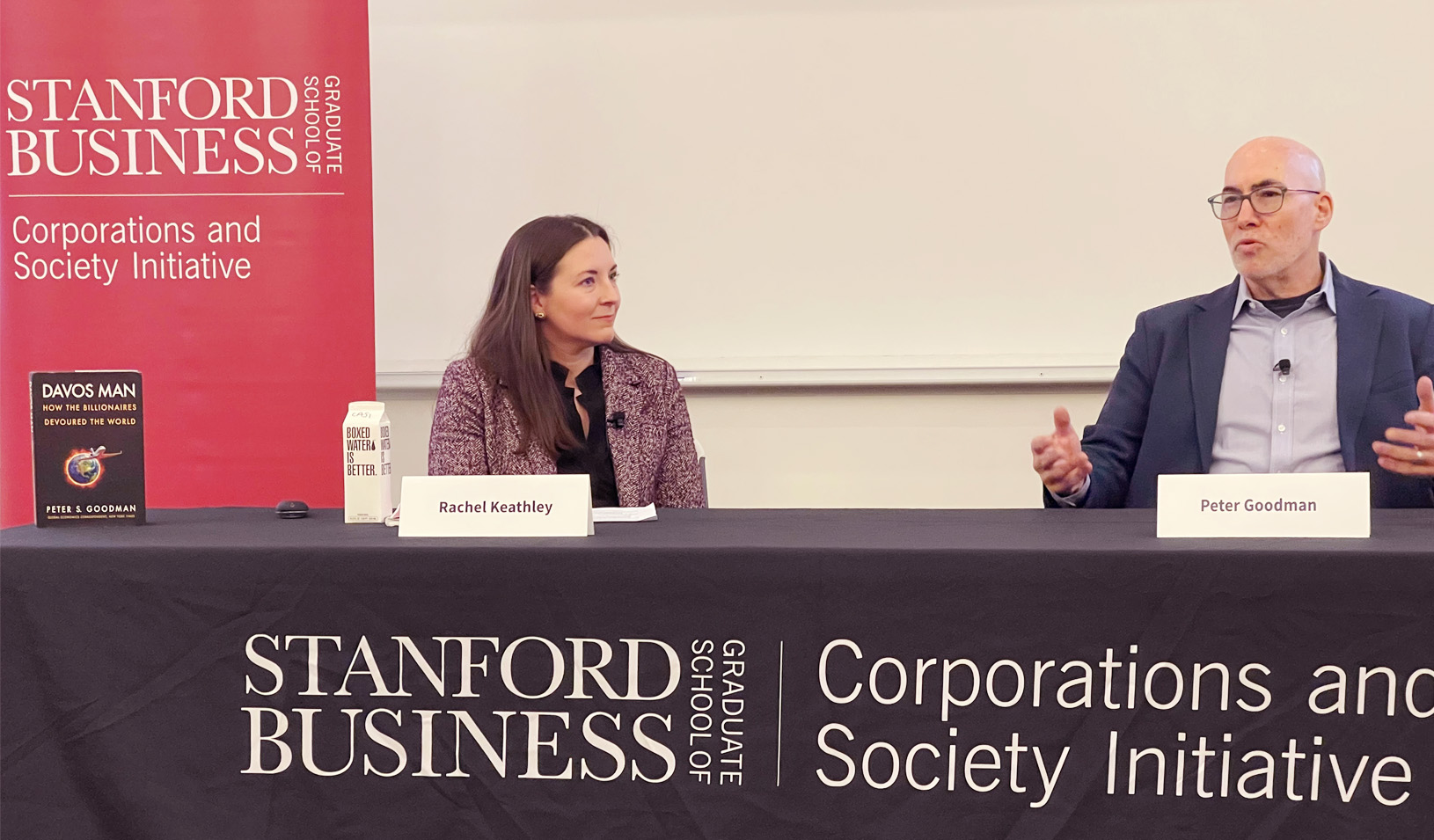Within the first 27 seconds of a routine traffic stop, Professor Jennifer Eberhardt can predict whether that encounter will lead to an escalation.
In a groundbreaking study, Eberhardt found that the first 45 words spoken by police officers during traffic stops can predict with over 70% accuracy whether the encounter will escalate. By analyzing body camera footage from nearly 600 stops involving Black drivers, Eberhardt’s team identified a “linguistic signature” that often precedes handcuffing, search, or arrest.
In the latest episode of our Quick Study video series, Eberhardt discusses how these findings could revolutionize police training and improve community relations by leveraging the rich data contained in body camera footage.
Full Transcript
Jennifer Eberhardt: Most law enforcement agencies now have their officers wear body cameras, and we’ve seen that footage used as evidence in high-profile cases. But what about those thousands and thousands of hours of routine footage? Believe it or not, the vast majority of this footage is never examined. Eventually, it’s deleted, and that’s a lost opportunity.
Police departments can’t really learn from that footage if they’re not watching it, and so that’s what we set out to do. We examined traffic stops of Black drivers in a major American city for a month, almost 600 stops. Then we ran a computerized language analysis on the recordings. We wanted to see whether the language officers used could predict what we call an escalated outcome. That is, could we predict whether the driver would be handcuffed, searched, or arrested by the end of the stop?
Turns out, we can use the first 45 words that an officer speaks as a pretty good indicator of whether that stop is going to escalate. That is, we can use the first 27 seconds of a stop to predict escalation. The cues, what we call the linguistic signature, came in two forms. One was that the officer quickly began giving orders. The second was that the officer did not explain the reason they stopped the driver.
A lot of people assume that these traffic stops start out okay and slowly escalate over time, but we found that the stops that ended in escalation often began in escalation.
Let’s consider an encounter that we are all now familiar with, George Floyd. The world knows what happened after Minneapolis police officers removed Floyd from his car, but they’re much less familiar with how that stop began. How did it start and get to that point?
Officer: Let me see your hands.
George Floyd: Hey, man. I’m sorry.
Officer: Stay in the car. Let me see your other hand.
George Floyd: I’m sorry. I’m sorry. I’m sorry.
Officer: Let me see your other hand.
George Floyd: Please, Mr. Officer.
Officer: Both hands.
George Floyd: I didn’t do nothing.
Officer: Put your fucking hands up right now. Let me see other hand.
George Floyd: Wait. What did I do though?
Jennifer Eberhardt: George Floyd was given nine orders in the first 27 seconds of his car stop, yet no explanation for why he was stopped.
In our data set, using just the first 45 words of an interaction, roughly the first 27 seconds, our language model could predict whether a stop would lead to a search, handcuffing, or arrest with over 70% accuracy.
Next, we wanted to test this computer language analysis on humans. We recruited 200 Black male drivers to listen to the first 45 words of the same traffic stops. They didn’t know which recordings led to escalated outcomes, but we asked these men to put themselves in the driver’s shoes to tell us how they would feel and what their impression of the officer would be.
On average, they felt more anxious when they were listening to the initial moments of stops that actually did escalate. They felt like the officer’s demeanor was more sharp and negative and they also were more likely to predict that that stop was going to end with the driver being handcuffed, searched, or arrested. These Black male participants were picking up on the same linguistic signature we found through our computational models.
How can we use this information? Nearly 19 million drivers are stopped by police each year. It’s one of the most common ways Americans come in contact with the police. And we already know that Black drivers are more likely to be stopped, searched, handcuffed, and arrested than almost any other racial demographic. But until now, we haven’t really understood what’s happening during those stops. We’ve never had rich data like this that actually gives the full texture of the interaction that took place. Yet with the spread of body-worn cameras, we can now see what’s going on beat by beat, moment by moment.
If police officers know that certain language can lead to escalated outcomes, they can make changes in those first few seconds to avoid that dynamic. But this would require law enforcement agencies to treat body-worn camera footage as data, data that could help improve police-community relations, not just as evidence in controversial cases. Tax dollars are being used for these cameras, and the more we know, the more we understand what’s going on, the more effectively we could intervene where necessary.
Many people feel like the problems with policing are intractable, but we are living in an amazing time. Cameras and footage analysis can be a game-changer. If law enforcement agencies aided by researchers can leverage this trove of untapped data, it could be incredibly beneficial to public safety.
For media inquiries, visit the Newsroom.






